- Static electricity is the result of the imbalance between positive(+) and negative(-) charges in an atom.
- Objects can be given an electric charge by friction.
- But most of the time, charges in objects are balanced out.
- Occur more frequently when the air is dry and cool. (transfer of e is faster)
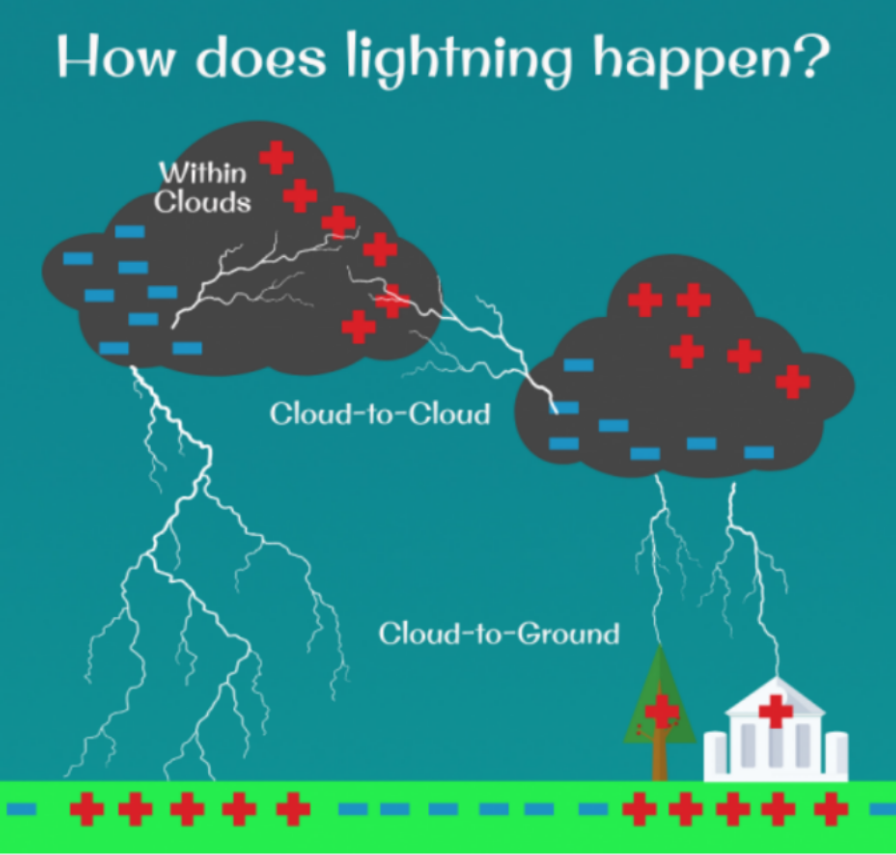
H2O → H+ & OH-
- Moving clouds rub with one another
- Positive and negative charges present in the cloud
- Negative particles in negative clouds repel each other and induce objects on the ground.
- Then, electrons jump to the objects on the ground, or electrons of the objects from the ground jump into the cloud. → lightning
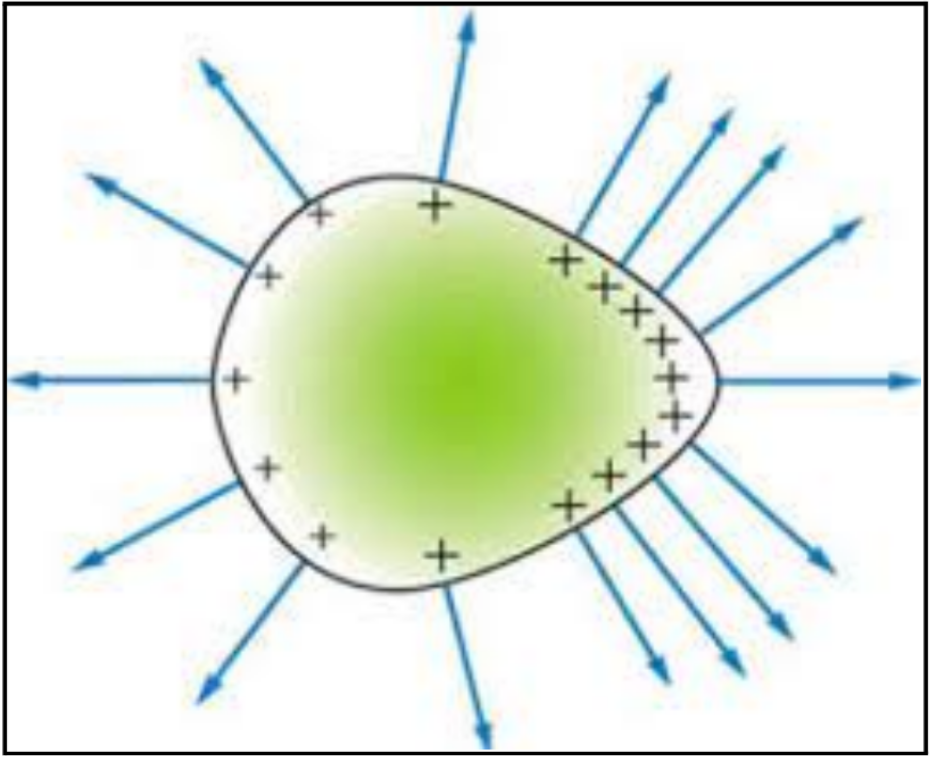
- Lightning rods are spiky.
- It gets charged oppositely through induction
Provide a path for lighting to pass to the ground
*give and take electrons from the ground is negligible.
(electric charge of the earth - 0)
Electric charge distribution is higher on spiky objects.
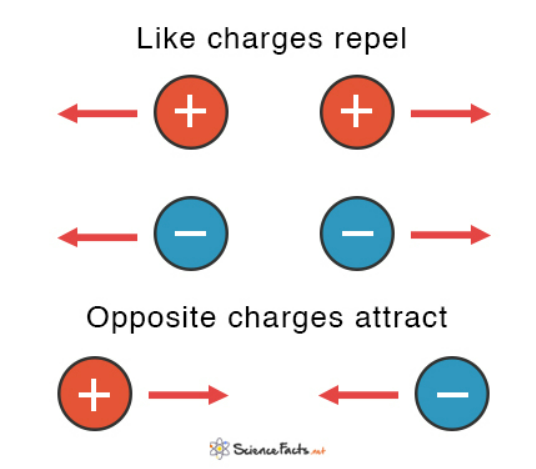
- Electric charge is only effective on charged objects.
- Electric force exists only between electric charges.
(+) & (+) - repel
(-) & (-) - repel
(+) & (-) - attract
[like charges repel, opposite charges attract]
Unit of electric charge - Coulomb (C) A Coulombmeter is used to measure electric charge(positive or negative) or quantity of electricity.
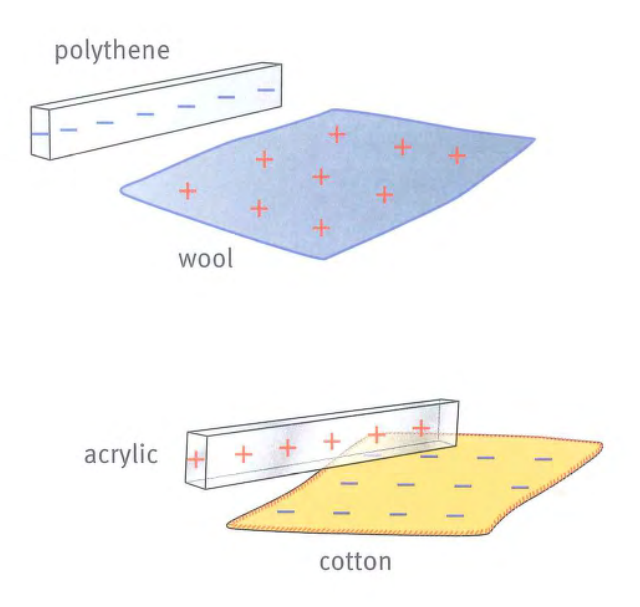
Transfer of electrons between the 2 neutral objects that are rubbed together.
One material gains a (+) charge, the other a (-) charge.
Electron giver → (+) charge, receiver → (-) charge.
Materials that hold their electrons weaker than the others lose them and become (+) charged.
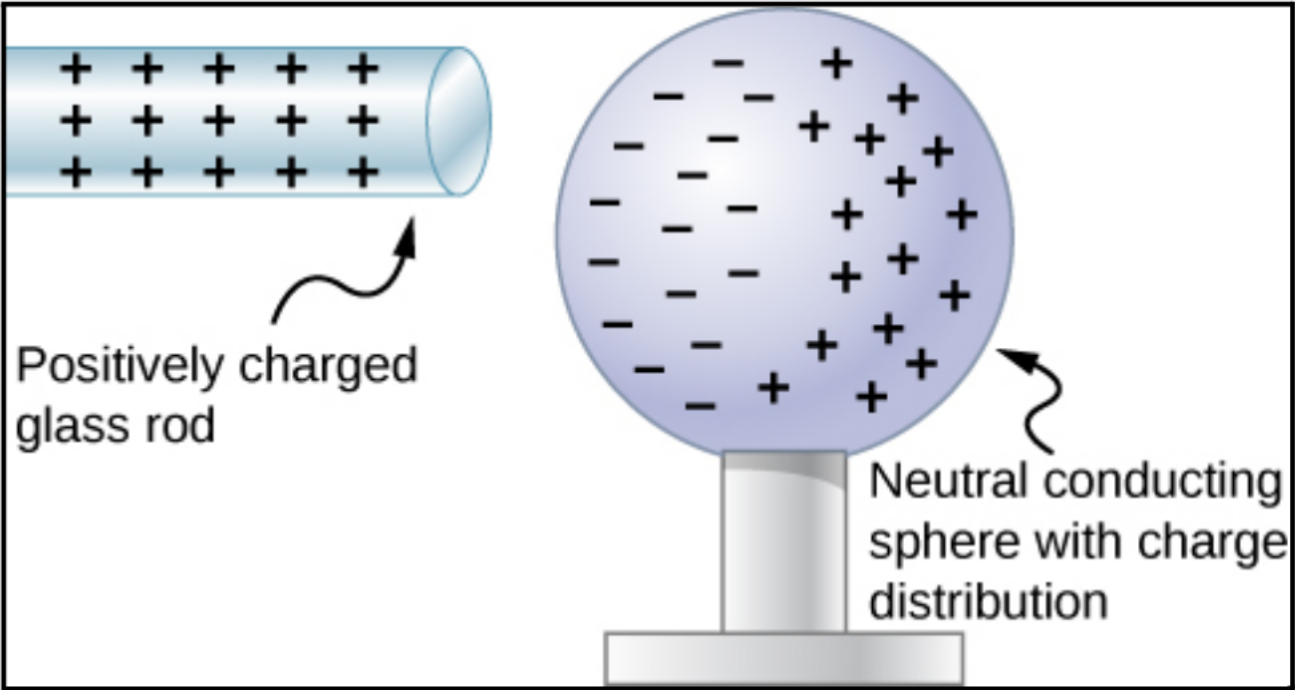
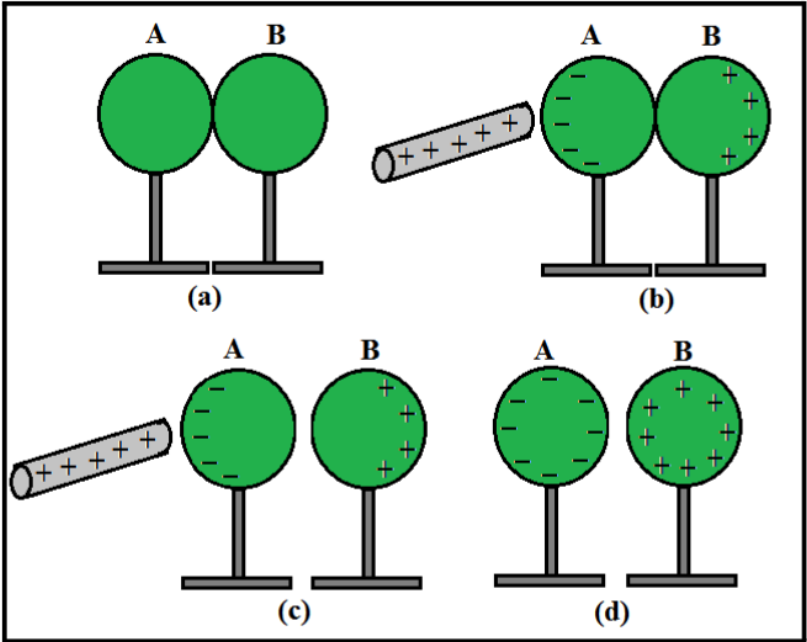
- Charging objects temporarily by induction.
- A charged object is brought near a neutral object it causes (induces) the electrons to shift, resulting in an uneven distribution of charges
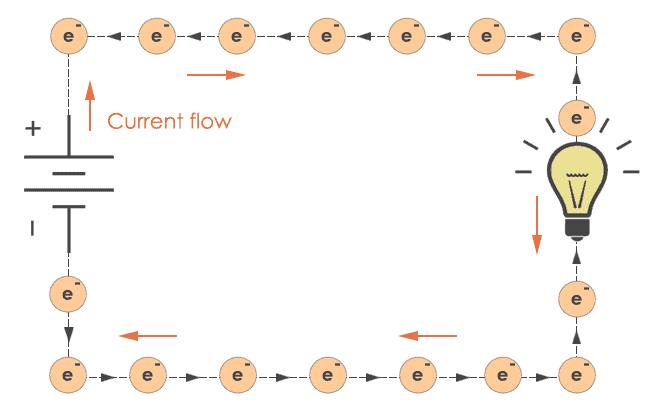
- Flow of electrons
- Metals conduct electricity as they have free movable electrons
- Electrons are moving randomly
- In order for electrons to flow (in one direction), there should be a force that is pushing them and there has to be a continuous pathway/complete circuit.
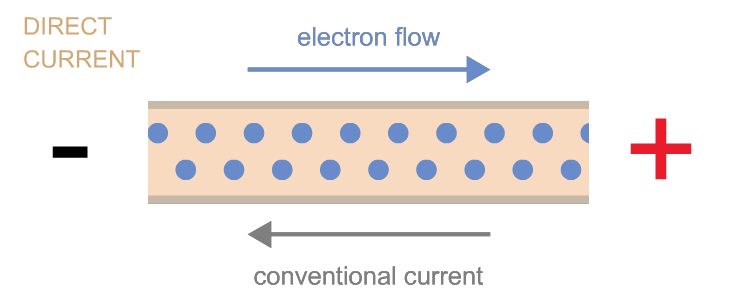
Battery gives chemical potential energy.
When a wire is connected to the battery,
- (-) terminal pushes the free electrons(-) in the wire away whereas the (+) terminal attracts them.
- Electrons move in the same direction, from the (-) to the (+), at a speed, passing through the cations.
- Current flows from (+) terminal to (-) terminal.
- Friction → heat energy(inescapable)
- Every current-carrying wire has a magnetic field around them.
- When an electric current flows in a circuit it can have 3 effects: heat, magnetic, and chemical.
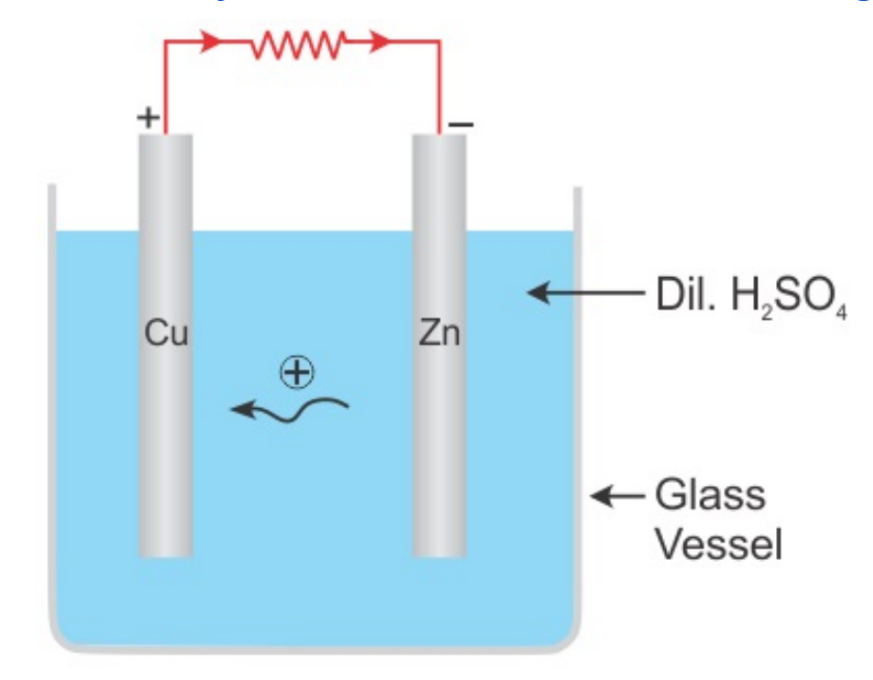
CuSo4
- Cu loses 2 electrons → Cu2+ & SO42-
- Iron (Fe) gives its 2 electrons to Cu. And Fe2+ take place of copper in the compound and form FeSO4.
- CuSO4 + Fe → FeSO4 + Cu>
- Electrons flow cuz of chemical properties between the reactants.
- See the experiment>>> //youtu.be/3wLJLm0QLpg

- A measure of how much charge is carried by electrons that flow through per 1s
- Depends on how strong the push(CPE) is
- Symbol of current - ‘I’
- Unit of current - ampere(apms) / Symbol - A
Electrons get kinetic energy from the CPE inside the battery.
When those electrons pass through the light bulb, kinetic energy → light energy
Electrons are not used up by the current at all.
The battery runs out of CPE as time passes. (concentration of reactants decrease) The strength of the terminals also decreases.

- A measure of the push of a cell in a circuit
- Symbol of voltage - ‘V’
- Unit of voltage - volt(V) / emf (electromotive force)
- Voltage is given by CPE.
The more batteries are used, the greater the current is.
We also get voltage from the main line(plug) / generator.
The currentis directly proportional to the voltage.
2V battery - can push 1e with 2V
The energy needed to push 1e = x J(Joule), 2e = 2x J, 3e = 3x J
Push more electrons - CPE decreases
The more electrons move, the more friction there is, the more heat energy there is.
W = VQ
W = work done, in Joules. V = potential energy of the circuit, in Volts. Q = quantity of electric charge, in Coulombs.
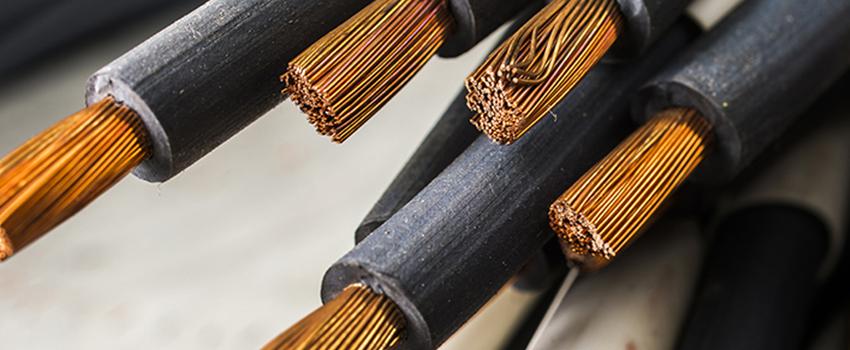
Insulation materials resist electrical leakage, prevent the wire's current from coming into contact with other conductors.

Copper is used as wire as it is not really reactive compared to iron, aluminum, and other metals. Its electricity conductivity is also high.

- Made of alloys (such as Zn, Cu, Ag, Al, Sn, etc)
The fuse contains a piece of wire that melts easily. If the current going through the fuse is greater than the limit, the wire heats up until it melts and breaks the circuit (to prevent electric shock in the house).
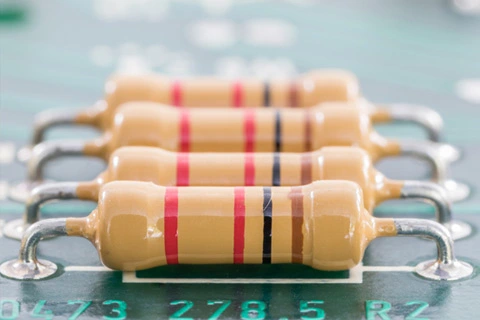
Resistor creates resistance in order to reduce the current in the circuit.
Every electrical device has a different resistance(unit - Ohm).
Made of semiconductor.
Resistance is inversely proportional to current.
The greater the resistance is, the less current flow there is.
The resistance of an object mostly stays constant.
More current flow > more friction > Temp increases >
Resistance also increases according to the temperature.

Current is the same (I = Ia = Ib= Ic)
Voltage is divided (V = Va + Vb + Vc)

Current is divided (I = Ia+ Ib+Ic)
Voltage is the same (V = Va + Vb+ Vc)
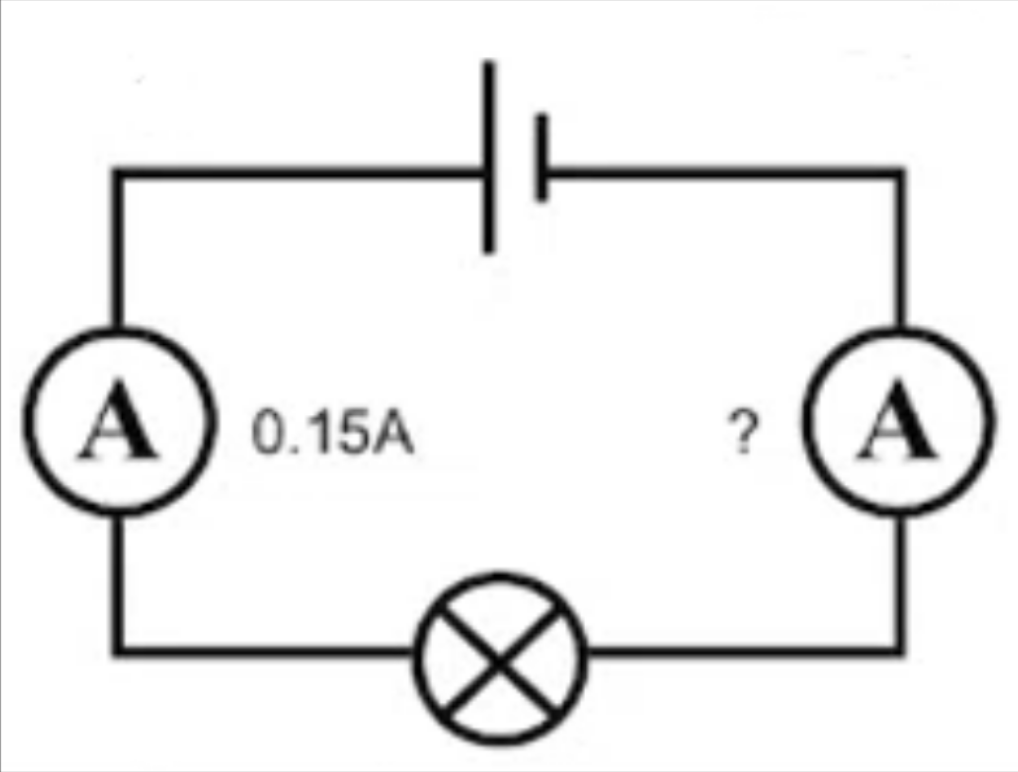
Ammeter - Circuit symbol A - measures current (I) with unit Ampere (A)
Ammeter has very low resistance(so it doesn’t affect the current) and it is connected in series with the component.
Positive terminal of the Ammeter is connected to Positive terminal of the battery and negative terminal of the Ammeter is connected to negative terminal of the battery.

Voltmeter - Circuit symbol V - measures Voltage (V) with unit Volt (V)
Voltmeter has very very high resistance and it is connected in parallel with the component.
Positive terminal of the Voltmeter is connected to Positive terminal of the battery and negative terminal of the Voltmeter is connected to the negative terminal of the battery.
AC current doesn’t move in one direction and rever its direction. It doesn’t have the polarity.
It changes its flow between (+) and (-) terminal.
DC current flows in only one direction.
Adapter(of phone or laptop charger) change AC of the mainline to DC.